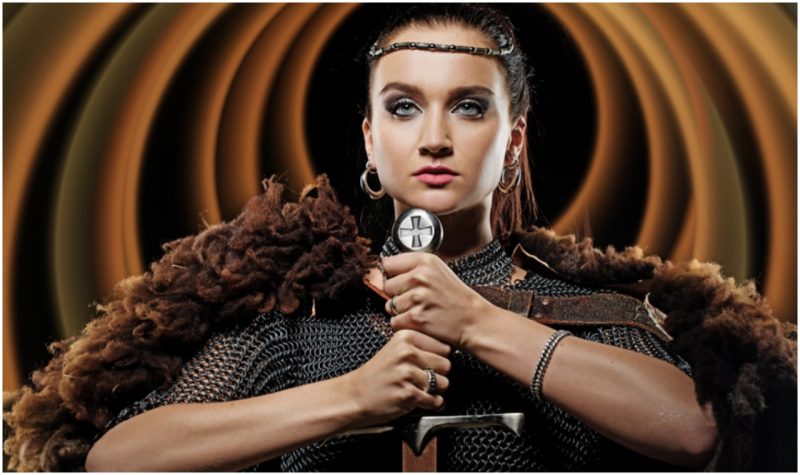The Latin alphabet arrived in Denmark in the 9th century, but only a select few – mostly missionaries, used it. It slowly traveled into the rest of Scandinavia with the spread of Christianity by the end of the 11th or beginning of the 12th centuries.
It’s too bad, in a way, because the people that really could have left us some interesting stories, the Vikings, used primitive runes that were not really flexible enough for long narratives.
That leaves historians and the rest of us with just intriguing glimpses of the northern warriors left by Arab travelers, and the sagas written centuries after the last Viking raids.
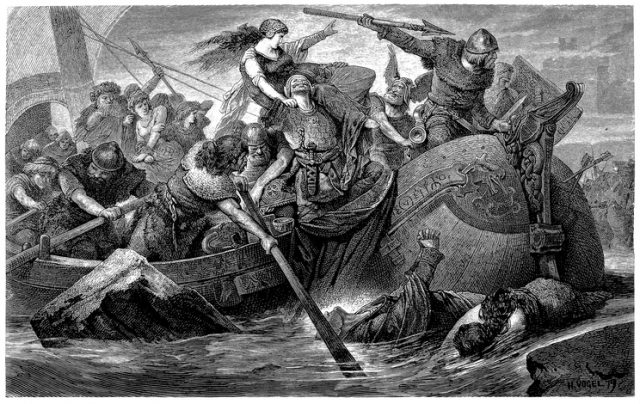
One of the most intriguing stories is that of Freydis Eiriksdottir, reputedly the daughter of famed explorer Eirik (or Erik) the Red. There are two stories about Freydis in two different sagas: The Greenland Saga, and the Sage of Eirik the Red.
The Greenland Saga, which tells of the Icelandic Viking discovery of the world’s largest island, is believed to have been written sometime in the 1200s, some two hundred years after the events in it are supposed to have taken place. The Saga of Eirik the Red was at about the same time.

Though she is only mentioned briefly in the sagas, Eirik’s daughter Freydis stands out. In both sagas, she is a tough, determined woman and a formidable foe. The only problem, from a historical standpoint, is that in one of the stories, she’s a hero, fighting off Native Americans, and in the other, she’s a conniving and dangerous axe-wielding murderer.
In the Greenland Saga, Freydis and two brothers, Helgi and Finnbogi, agree to undertake an expedition to “Vinland”, as the Vikings had labeled their southernmost North American landing site. As many of you likely know, this was probably in the area of L’anse aux Meadows in Newfoundland.
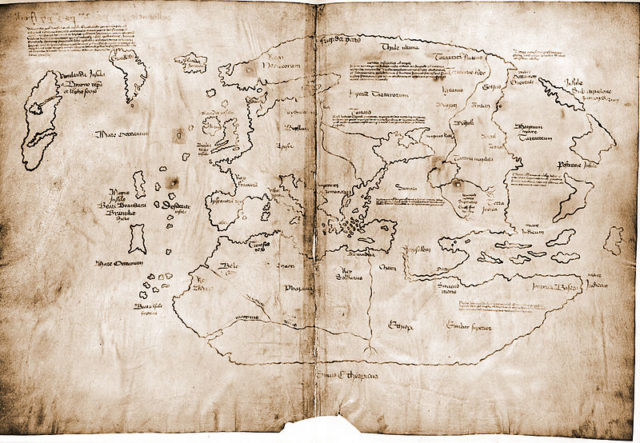
The three agreed to travel to Vinland and share any profits fifty-fifty. Freydis, among other reasons, wanted to go to Vinland to claim a home already built out by her brother Eirik.
Eirik tells her she can use it but doesn’t give it to her. Then, she and the brothers agree to go in three ships – but none of them were to take more than 30 men (and an unspecified number of women) with them, so none would have an advantage.
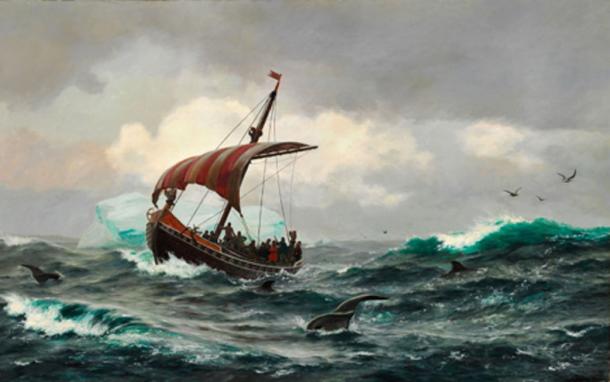
Freydis, however, secreted five extra warriors on her ship. Before you get ahead of yourself, brothers in the Viking Age were not always allies – the sagas and actual history are replete with family members turning on each other.
Getting there before Freydis, the brothers move into Eirik’s home. When the woman arrives, she makes them move their things and they are forced to build their own home for the coming winter.
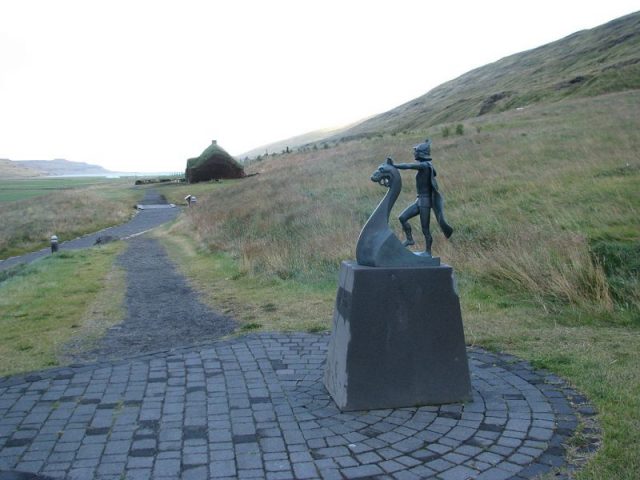
During that season, she and the brothers engage in petty disputes and develop a nice, deep Viking hatred of one another, but when spring comes, Finnbogi tells Freydis that he is tired of always arguing. Freydis falsely tells him that she is tired of Vinland and wants to go home.
They strike a deal involving their ships and some goods, and Freydis goes home, where she tells her husband Thorvard a totally different story. Sounds like a Viking soap-opera, and its about to get bloody.
Freydis spins a lie about how the brothers took advantage of her in a deal and how one actually hit her. She keeps egging her man on until he agrees to take the rest of their party and seek revenge.
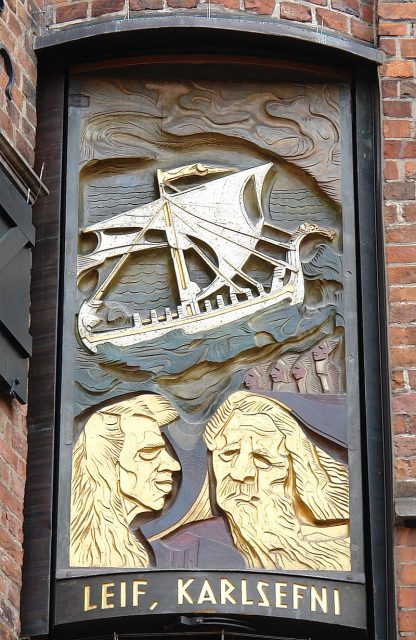
Thorvard and his men sneak into the brother’s camp, take them unaware, and truss them up. Then kill them. Within minutes, the only people alive are the five women that were in the brother’s party.
Freydis wants them dead, too, but none of her men will do it. So, she grabs an axe herself and hacks them to death, and enjoys doing it. She then swears her men to silence, and heads home, telling her crew to tell any curious Icelanders that the brothers elected to stay in Vinland. For their silence, her men are rewarded handsomely back in Iceland.
https://youtu.be/TchiY6MSjm8
The consequences? Well, none. Except – her brother Leif finds out and essentially puts a curse on her and her descendants. End of story.
In the other version, from Eirik’s Saga, Freydis comes across about as savage, but this time, it is the Native Americans of Vinland who draw her ire. Referred to in the sagas as “skraelings”, meaning “screamers” or “screechers” for their war cries, first contact with the Vikings leaves eight Indians dead on the beach.
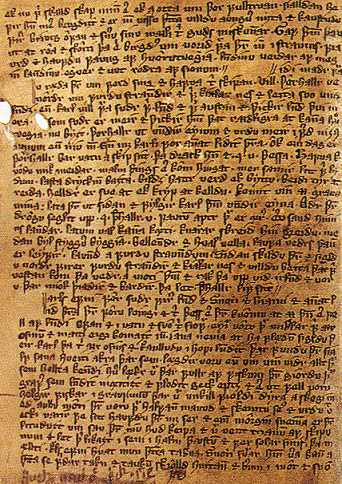
On another visit, the Viking settlers and the skraelings settle down to an uneasy peace and even begin to trade with one another, but that peace ends when a Viking bull escapes from its pen, terrifying the natives, who have not seen such a beast before.
The Vikings then leave their settlement for a better fighting position and fight a series of small battles with the skraelings, coming out on top, but realizing that no matter what, they will always be outnumbered, and they leave.
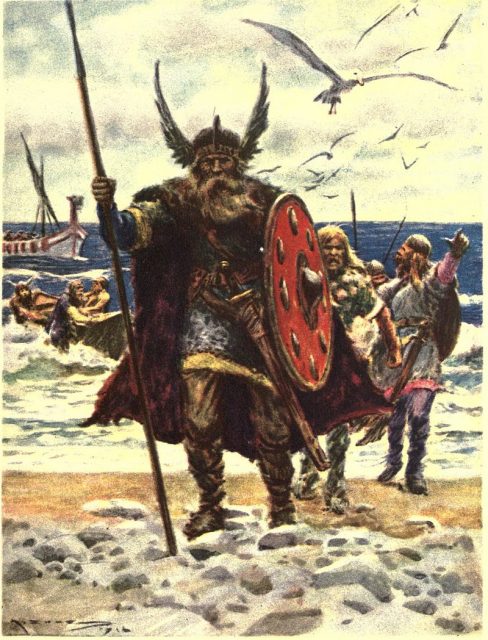
Sandwiched in between the arrival of the Vikings and their departure is the other story of Freydis. Surprised in the woods by the skraelings, the Vikings turn and run for their homes – all except Freydis, who is pregnant and about to give birth. She screams at her countrymen, “Let me but have a weapon, I think I could fight better than any of you.”
None of them help, but she picks up a sword from a Viking body, tears open her blouse to bare one breast, screams at the Native Americans, and beats her bare breast with the flat of her sword at the same time. According to the story, the Indians, never having seen anything like this before, get freaked out, turn tail and run. Freydis has saved the day. And that’s the end of the story.
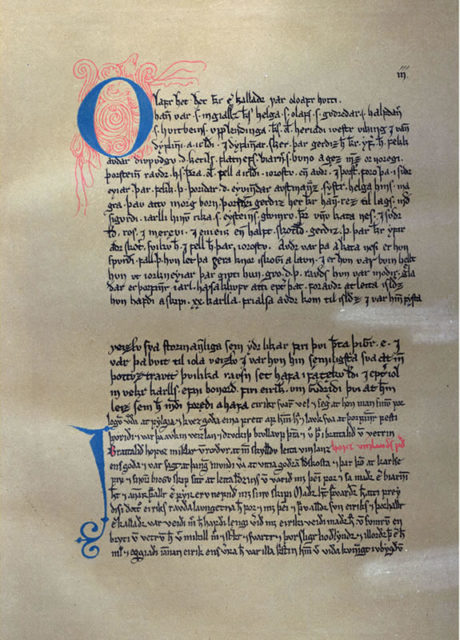
Why the two entirely different accounts? Historians debate. Many believe that the Greenland Saga, written centuries later, and by a Christian writer, is a Christian morality tale.
The saga also mentions the fact that Freydis, when asked to convert to Christianity at some point, refuses. And of course, there is her murdering innocent countrymen in cold-blood. The saga was written at a time of strong anti-female bias in the Church and reflects that in Freydis’ character.
Read another story from us: Modern Viking Mead Hall Opens in Seattle – Packed with Old Nordic Lore
The Freydis of the Eirik the Red’s Saga is believed to be a conglomeration of a variety of old Viking stories about female warriors, or shield-maidens, but is also considered to be a re-write of the Greenland Saga, but with some major revisions. Either way, Freydis, whoever she was, was Viking through and through.
